Tung tung da da – the Co Tu people’s “dance for the Gods”, brings tourists to explore the cultural life of the people living in the midst of the majestic Truong Son mountain range.
In his memory, old Zuong Noonh from Pa Rong village, Ta Bhing commune, Nam Giang district 10 years ago was poor. However, everything has changed since the Japanese Foundation for International Development/Relief (FIDR) came to help the Co Tu restore their traditional brocade weaving. It also provided support to the local people by developing community-based tourism under a project funded by the Japan International Cooperation Agency (JICA).
About 10 years ago, only eight women in Ta Bhing Commune knew how to weave brocade. Then, a traditional brocade weaving cooperative was set up with 40 members. The products are diverse with many beautiful pieces that are of cultural value to foreign tourists.
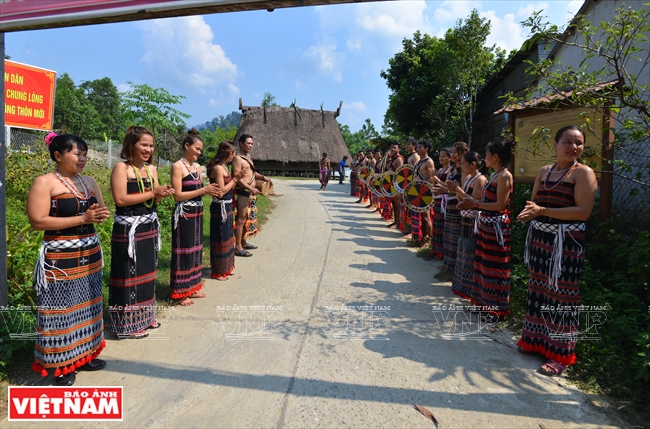 Young Co Tu girls welcome visitors to Pa Xua village. Photo: Thanh Hoa / VNP
Young Co Tu girls welcome visitors to Pa Xua village. Photo: Thanh Hoa / VNP
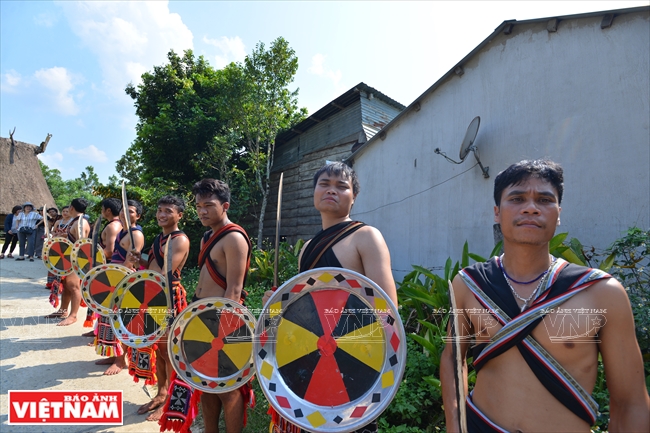 Co Tu young men look like warriors. Photo: Thanh Hoa / VNP
Co Tu young men look like warriors. Photo: Thanh Hoa / VNP
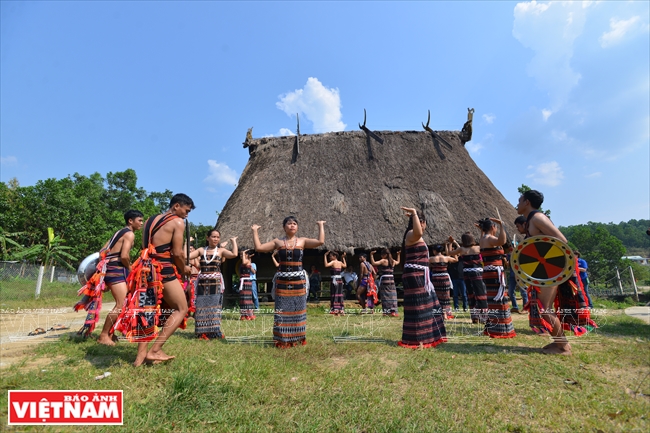 The Tung tung da da dance of the Co Tu. Photo: Thanh Hoa / VNP
The Tung tung da da dance of the Co Tu. Photo: Thanh Hoa / VNP
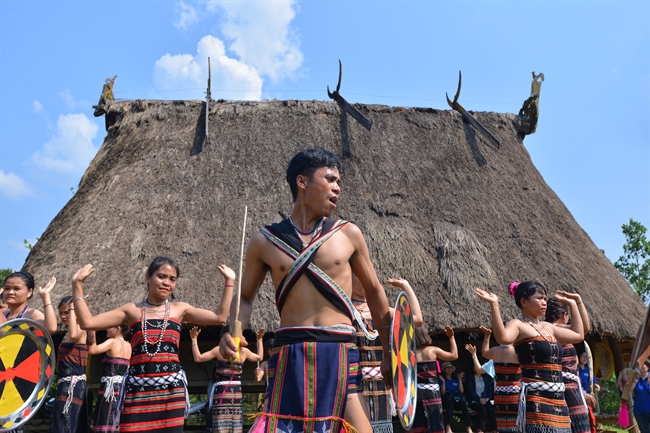 Co Tu young people perform the Tung tung da da dance. Photo: Thanh Hoa / VNP
Co Tu young people perform the Tung tung da da dance. Photo: Thanh Hoa / VNP
 Pa Xua villagers welcome tourists. Photo: Thanh Hoa / VNP
Pa Xua villagers welcome tourists. Photo: Thanh Hoa / VNP
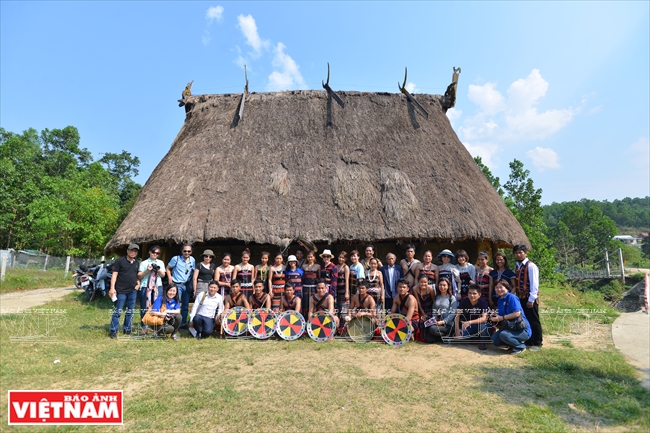 Tourists pose with Pa Xua tung tung da da dance club. Photo: Thanh Hoa / VNP
Tourists pose with Pa Xua tung tung da da dance club. Photo: Thanh Hoa / VNP
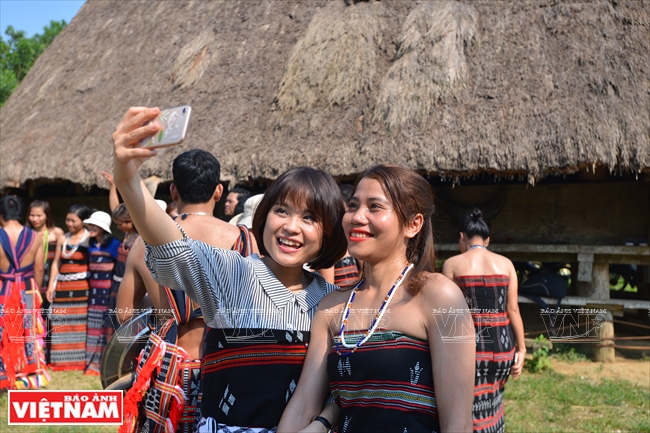 Posing with a friendly Co Tu girl . Photo: Thanh Hoa/VNP
Posing with a friendly Co Tu girl . Photo: Thanh Hoa/VNP
In 2016, one more cooperative in Ta Bhing commune started to focus on tourism. The Co Tu joined in by decorating their houses and villages to welcome guests. Each village contributes a specialty to turn the whole commune into community-based tourism. Pa La village prepares traditional dishes for guests. Pa Rong women show tourists how to pound rice and chop firewood. Zora village is where tourists can learn about brocade weaving, and Pa Xua village attracts tourists with the cheerful and colorful Tung tung da da dance.
The good thing about Co Tu community-based tourism is that all tourism activities are connected with the life and culture of the community, with the participation of all villagers. The locals work together to act as hosts when the number of visitors increases and return to farming when there are no guests. When going to Ta Bhing, tourists have a chance to discover and enjoy a natural and interesting local cultural life.
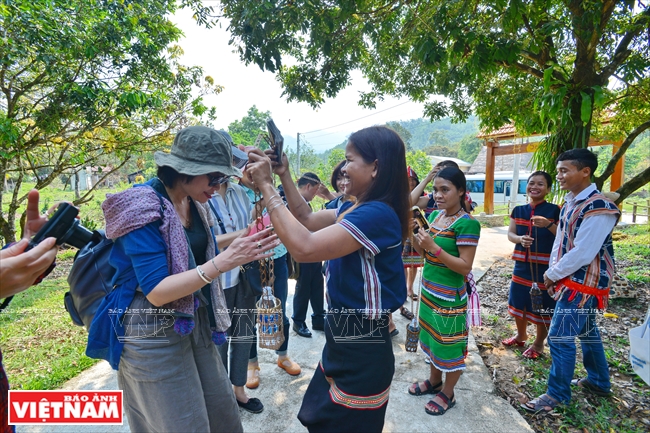 Co Tu girls from Pa Rong village give visitors souvenirs. Photo: Thanh Hoa / VNP
Co Tu girls from Pa Rong village give visitors souvenirs. Photo: Thanh Hoa / VNP
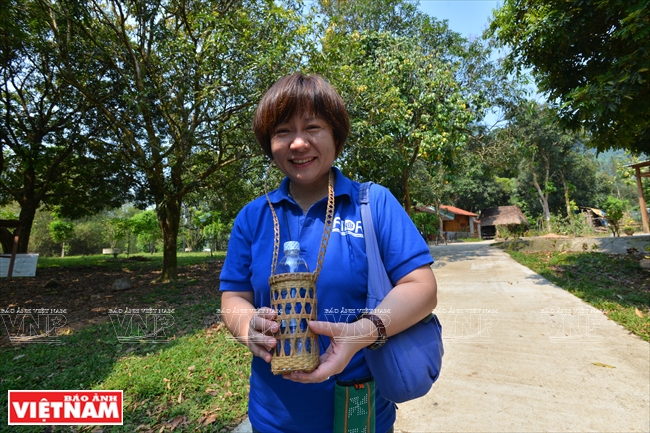 Nobuko Otsuki - Chief representative of the FIDR in Vietnam, on her trip to Ta Bhing commune in early 2018.
Nobuko Otsuki - Chief representative of the FIDR in Vietnam, on her trip to Ta Bhing commune in early 2018.
Photo: Thanh Hoa / VNP
 Tourists practice pounding rice. Photo: Thanh Hoa / VNP
Tourists practice pounding rice. Photo: Thanh Hoa / VNP
 Visitors explore life in a traditional Co Tu family in Pa Rong village, Ta Bhing commune.
Visitors explore life in a traditional Co Tu family in Pa Rong village, Ta Bhing commune.
Photo: Thanh Hoa / VNP
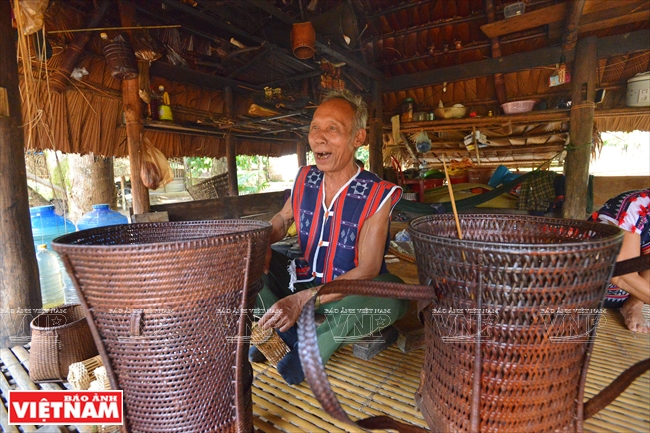 Zuong Noonh from Pa Rong village makes bamboo-rattan products. Photo: Thanh Hoa/VNP
Zuong Noonh from Pa Rong village makes bamboo-rattan products. Photo: Thanh Hoa/VNP
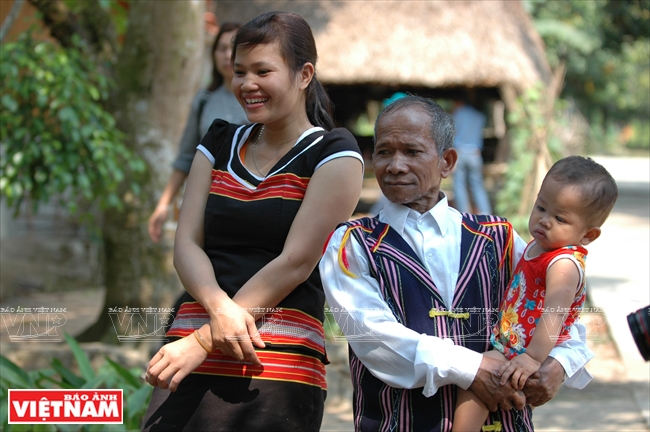 The bright beauty of Co Tu people in Nam Giang district. Photo: Thanh Hoa / VNP
The bright beauty of Co Tu people in Nam Giang district. Photo: Thanh Hoa / VNP
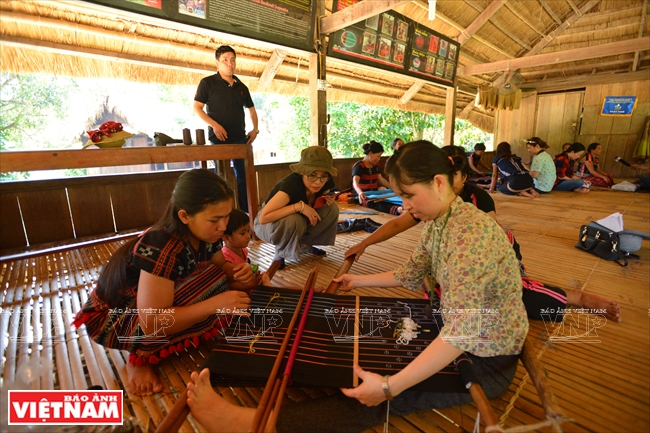 Tourists learn about brocade weaving in Zora village, Ta Bhing commune. Photo: Thanh Hoa / VNP
Tourists learn about brocade weaving in Zora village, Ta Bhing commune. Photo: Thanh Hoa / VNP
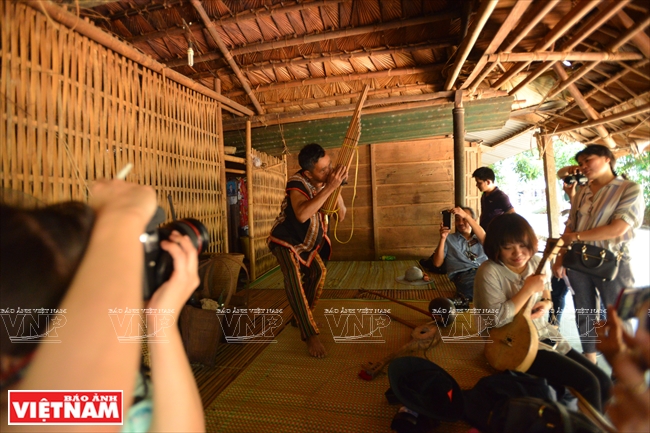 Hoih Coi from Pa Va village is a living treasure of the Co Tu traditional music. Photo: Thanh Hoa / VNP
Hoih Coi from Pa Va village is a living treasure of the Co Tu traditional music. Photo: Thanh Hoa / VNP
 Hoih Coi shows a necklace made of two large wild boar tusks. Photo: Thanh Hoa / VNP
Hoih Coi shows a necklace made of two large wild boar tusks. Photo: Thanh Hoa / VNP
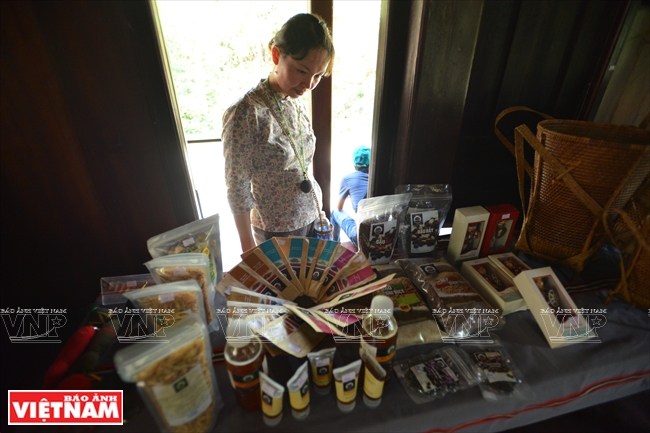 Tourists explore the traditional products of the Co Tu. Photo: Thanh Hoa / VNP
Tourists explore the traditional products of the Co Tu. Photo: Thanh Hoa / VNP
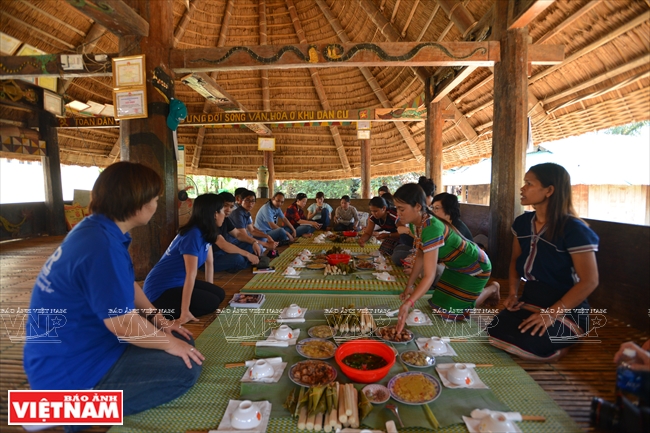 Tourists enjoy Co Tu traditional food in guol (communal house). Photo: Thanh Hoa / VNP
Tourists enjoy Co Tu traditional food in guol (communal house). Photo: Thanh Hoa / VNP
Briu Thuong, director of the cooperative, operates all tourist activities in Ta Bhing.
Tourists will make their first stop at Pa Rong village. They will also visit the village’s communal house called guol and then see tung tung da da dancing in Pa Xua village. At noon, local dishes will be served at the village’s communal house. After that, tourists can see brocade weaving in Zo Ra village.
In Ta Bhing, tourists experience Co Tu community’s cultural activities without feeling bored. Foreign tourists, especially Japanese and Korean tourists, are interested in this unique one-day tour when they travel to Quang Nam province. The sustainable community-based tourism project has helped improve the Co Tu people’s life and preserve their unique cultural identity./.
By: Thanh Hoa